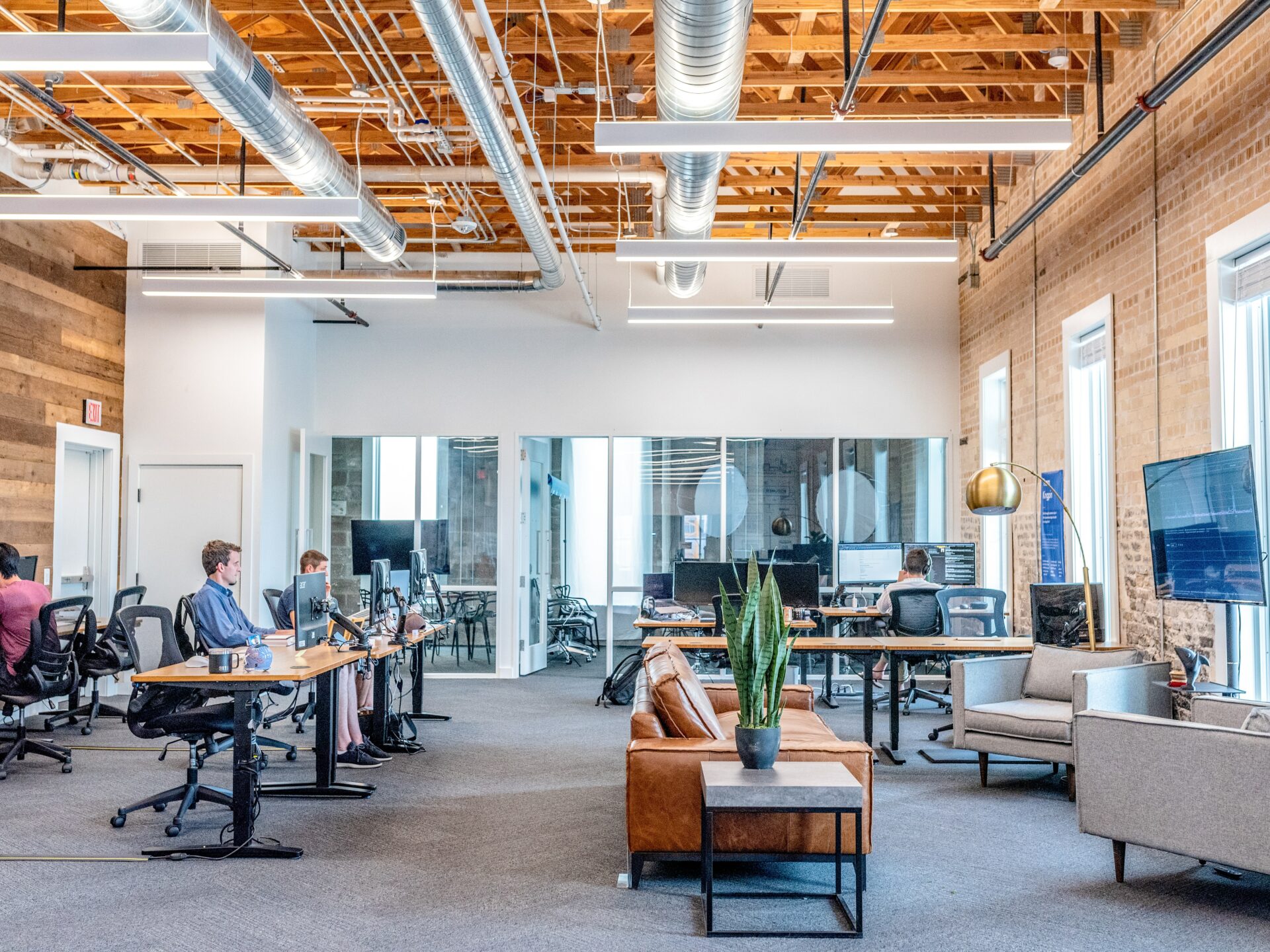
26 October 2023
What Is An Agile Workspace?
Posted on October 26, 2023 by edenlondon. Last Updated on December 9, 2024
The concept of ‘agile working’ has its roots in software development practices, though in recent years the term has become more mainstream and is often used interchangeably with ‘flexible working’. The two share similarities and both adopt a different approach to traditional work and workspaces, but are not quite alike, and in this blog post we try to clear matters up by covering:
- What is agile working?
- What is the difference between agile and flexible working?
- What is an agile workspace?
- What are the benefits of an agile workspace?
Let’s get started.
What is agile working?
Agile working is an approach to work that, via work practices and work spaces, is team-oriented and future-oriented. At its heart is choice – people can decide when and where they want to work within the office to be their most comfortable, creative, and productive.
However, bear in mind there’s a lot of conflicting information on the definition of agile working as the term has evolved over the years. As mentioned before, it was originally used in the context of software development practices. In a recent study, scholars proposed “we define agile work practices as a bundle of instructions that enable teams to organise (a) taskwork activities and (b) teamwork activities in ways that align with the values of the agile manifesto (i.e., personal interactions over fixed processes, output over documentation, collaboration over contracts, flexibility over following plans)”.
Put simply, the hallmarks of the modern definition of agile working are collaboration, flexibility, and results.

What is the difference between agile and flexible working?
Flexible working is another term that has swiftly risen in popularity, especially during and after the pandemic. It is an approach to work that allows people to choose when and where they want to work. Its focus being – how can the traditional 9 to 5 work hours be adjusted to accommodate a better work-life balance?
Now, that may sound very similar to agile working. The key difference between the two is that agile working offers people the choice of when and where to work within an office.
What is an agile workspace?
Agile work requires an agile workspace – one that offers choice. Such a workspace should connect people, technology, and space in such a way to foster collaboration and productivity.
Unlike a traditional office where people are permanently assigned desks, agile offices are designed to be flexible. There are few barriers so that people can move freely around the office, engage with others if need be, or use dedicated shared spaces that are multipurpose and meet their needs at the time. The idea being that they can choose where they want to work in the office to be their most productive.
An agile workspace typically has some or all of the following:
- An open-plan layout
- Desk sharing (or hotdesking)
- Adjustable furniture such as standing desks
- Zones for different types of work (such as meeting rooms, quiet rooms, touchdown spaces, breakout spaces, kitchens and dining areas, resource spaces, etc.) that people can book to use if need be
The variety of spaces in an agile office should be optimised physically and technologically to perform their specific tasks. For example, meeting rooms should be versatile and allow for people to conduct presentations, host virtual meetings, etc.

What are the benefits of an agile workspace?
There are plenty of benefits that come with an agile workspace, including:
-
- Greater collaboration: Work isn’t restricted to a desk or department, and this in turn can foster greater teamwork and creativity. Especially when you consider how neuroscientists have shown how a dynamic workplace can be stimulating and boost creativity.
- Greater use of office space: Because care and consideration goes into the layout of the office space, no room is neglected, and every space is supporting a more agile way of working. What’s more, using energy-efficient technology such as motion activated hallway lights can help lower overall costs.
- Greater employee satisfaction: Recent research shows that 9 out of 10 millennials find flexibility to be a priority when job hunting. This can also lead to greater retention.
It’s also worth mentioning that agile workplaces can and should break away from traditional office spaces and work to be more inclusive and more accessible.

What next?
If you’re interested in implementing an agile office fit out, we recommend you get in touch with Eden London. We have over 20 years of experience in building workspaces that inspire people to produce their best work. What’s more, we have a 100% track record for delivering our projects on time and on budget.
View our case studies or get in touch to learn more about what we can do to help you design and build your own agile workspace.
